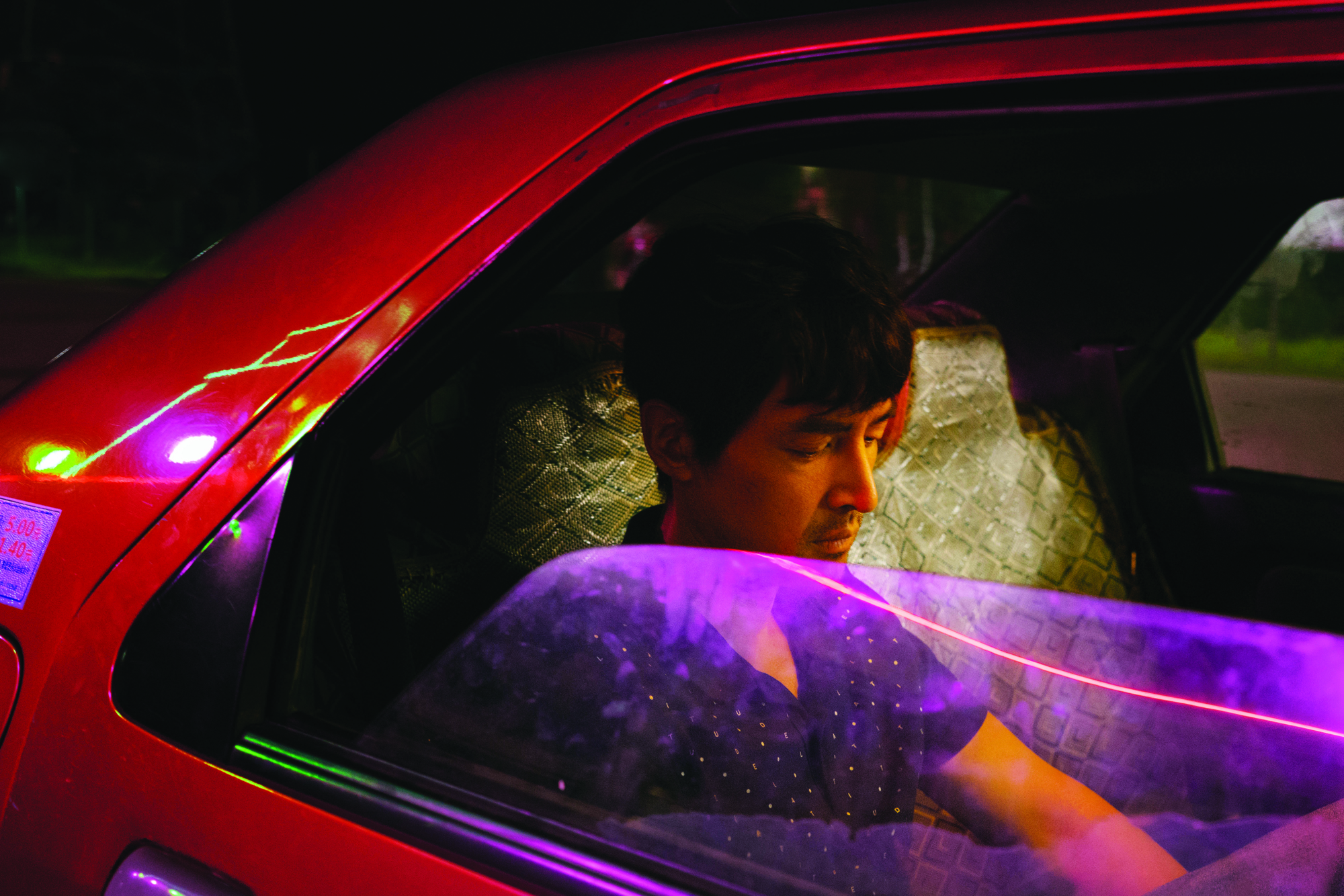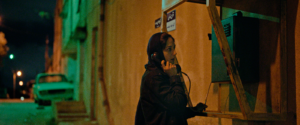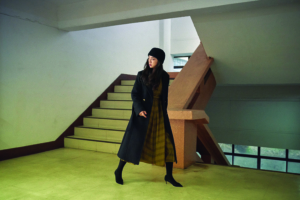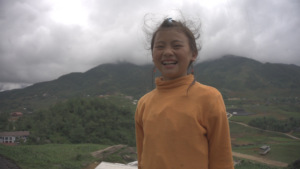Some of the most exciting Chinese films of recent years have come in a noir-inflected vein: Jia Zhang-Ke’s triumphant Ash Is Purest White (2018) returned its director to a degree of global renown not seen since A Touch of Sin (2013), while Bi Gan’s ambitious Long Day’s Journey into Night (2018) has had limited commercial outings in some Australian cities. Hot on the heels of these titles comes Diao Yinan’s The Wild Goose Lake (2019), which enjoyed an Australian theatrical release late last year courtesy of Umbrella Entertainment following bows at the Melbourne International Film Festival, the Brisbane International Film Festival and Adelaide’s OzAsia Festival. The film is Diao’s first since his breakthrough to international prominence: the Berlin Golden Bear–winning Black Coal, Thin Ice (2014). That film echoed both Memories of Murder (Bong Joon-ho, 2003) and Zodiac (David Fincher, 2007) in its depiction of an expansive, obsessive hunt for a serial killer, and the damage left in their wake. Indeed, Black Coal built on its director’s Uniform (2003) and Night Train (2007), with all of his films sharing an interest in low-level criminality and murky allegiances. Black Coal remains memorable for its chilly, rust-bucket location and serpentine narrative, and, while The Wild Goose Lake’s setting is radically different, Diao’s fondness for tricky plotting returns. Back, too, are the two stars of the earlier film, Taiwanese actor Gwei Lun Mei (who made her debut in Yee Chih-yen’s cult 2002 LGBT high school drama Blue Gate Crossing) and Chinese star Liao Fan (recently seen in both Ash Is Purest White and Jiang Wen’s 2018 action-comedy Hidden Man).

The Wild Goose Lake begins with archetypal immediacy at a remote, rain-soaked train station somewhere at night. Diao immediately establishes his ability to reveal a carefully selected array of elements – a man, a woman, a cigarette, a train – meticulously through shifting configurations of cinematic space. Cinematographer Dong Jinsong (fresh from Long Day’s Journey into Night) guides his camera around rain-slicked concrete columns and racks focus precisely, investing this meeting of two young strangers, and a shared cigarette, with tension and mystery. She is Liu Aiai (Gwei), he is Zhou Zenong (Chinese television star Hu Ge), and the cuts across his face suggest trouble lies in his not-too-distant past. Their encounter prompts a flashback, which will eventually disclose how they both arrived at this lonely place. What we’re given is a classic set-up harking back to Hollywood’s halcyon films noir of the 1940s, like Out of the Past (Jacques Tourneur, 1947). In recent years, inky nightscapes and saturated neon light have become a kind of cinematic shorthand, as seen in Drive (Nicolas Winding Refn, 2011) and Blade Runner 2049 (Denis Villeneuve, 2017). While Diao works with the same visual palette, his relationship with noir conventions is one of reverent appropriation, and he invests his filmmaking with formal sophistication, evident in his balletic play with on-screen and off-screen space as well as the flashes of violence that interrupt periods of stillness.
The film quickly reveals that Aiai and Zenong have their secrets. Recently released from prison, the latter quickly finds himself drawn into a factional dispute between rival crime gangs. A savage brawl erupts within a packed room, depicted via frequently strange elliptical fragments: a U-lock wielded as a weapon, a prosthesis wrenched from a limb. The upshot is a so-called ‘Olympics of theft’ to determine who can manage to steal the most motorcycles over the course of a night, shown in a propulsive nocturnal montage, which climaxes in a trip-wire decapitation. Zenong is ambushed by criminal rivals. Shot and bleeding and crawling through mud (the first of a series of indignities and punishments to which the film subjects his body), he manages to escape, but, in the ensuing fracas, mistakenly shoots and kills a police officer – the narrative’s point of no return that begins his downward slide towards oblivion.
In recent years, inky nightscapes and saturated neon light have become a kind of cinematic shorthand … While Diao works with the same visual palette, his relationship with noir conventions is one of reverent appropriation, and he invests his filmmaking with formal sophistication.
Via crosscutting montage, the police task force, led by Captain Liu (Fan), is then shown assembling and searching the surroundings as they announce a huge reward for the fugitive cop-killer Zenong. Diao efficiently condenses expository information through these montage sequences, introducing the titular lake and the array of illicit activities that take place there. The film reintroduces Aiai amid the industrial din of a textile mill. She is a ‘bathing beauty’, a sex worker plying her trade servicing the leisured tourists at the lake. She has been dispatched by her mobster boss to locate Zenong, and she successfully tracks down his estranged wife, Yang Shujun (Wan Qian), in the textile mill; this brings us to Zenong’s nocturnal train-station rendezvous with Aiai.
Uncertain as to where Aiai’s loyalties lie, and now aware of the scale of the police search, Zenong attempts to contrive a scenario that will ensure that the reward for his apprehension or death goes to his wife. Diao unfurls the narrative through a series of elaborate set pieces: a surreal vision of linedancers with light-up sneakers shuffling to Boney M’s ‘Rasputin’ erupts into a volley of gunfire as plain clothes police officers shake down and shoot up a night market. He also has a flair for punctuating the film with both shocking moments of violence and glimpses of the inexplicable: undercover cops wear imitation Versace; animal eyes glint in the darkness during a desperate foot chase through the zoo; and the rim of a distant hilltop is illuminated by an armada of approaching scooters, spelling imminent danger.
The Wild Goose Lake’s climactic confrontation takes place as the various factions converge on a multi-level apartment unit, which Diao stages ingeniously as multiple pursuers race up and down staircases exchanging gunfire, the odd stray bullet meeting an innocent bystander. The film’s narrative feels labyrinthine at times, folding in on itself across different time periods, but there is a portentous sense of inevitability about the characters’ drift southwards towards the lake. For them, this is a lawless place, but also a place of refuge. The lake, in fact, determined the film’s production location of Wuhan, in the central Chinese province of Hubei, and Diao explains that he
had no intention of presenting a social[ly] realistic grid of time and space, a realistic city of Wuhan. To me, the story takes place in a certain city in southern China, an abstract choice of space.[1]Diao Yinan, quoted in Film Movement, ‘Diao Yinan – Q&A’, The Wild Goose Lake press kit, 2019, p. 4.
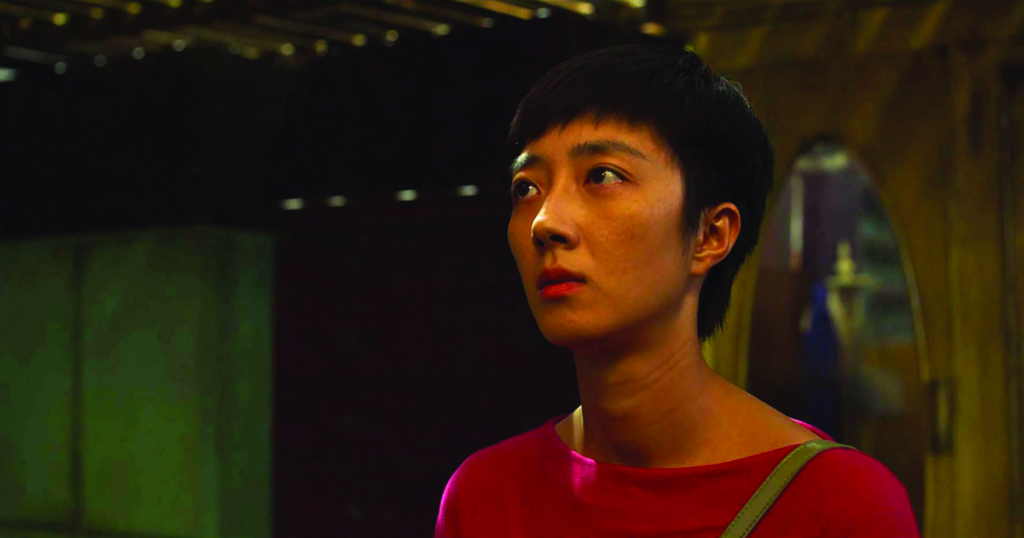
The tranquillity of this lake at the film’s centre can obscure the danger at its peripheries. As in Stranger by the Lake (Alain Guiraudie, 2013), the waterside is a place of idyll and covert sexual abandon for its visitors, but malfeasance walks undetected in their company. In rare moments of respite, Diao arrests The Wild Goose Lake’s headlong momentum and delivers some strangely touching moments: a simple bowl of noodles is eaten with the desperation of a last meal, and a boatside blow job is depicted with a languorous matter-of-factness that registers as a rare moment of human intimacy in what is otherwise a relentlessly brutal film.
For the most part, like any good film noir, The Wild Goose Lake marches forwards with a clockwork narrative logic, racing heedlessly towards its fated conclusion. Some critics have felt that the film’s narrative contrivances overpower thin characterisations with limited psychological depth. Peter Bradshaw, for instance, writes in The Guardian that viewers
were not permitted much access to the character’s innermost thoughts, and so some of the film’s romance, and its fatalism, did not have the piercing impact [of] the visual masterstrokes. But there’s no doubting Diao’s style.[2]Peter Bradshaw, ‘The Wild Goose Lake Review – Diao Yinan’s Shady Lady Noir Is No Quacker’, The Guardian, 19 May 2019, <https://www.theguardian.com/film/2019/may/18/the-wild-goose-lake-review-diao-yinans-shady-lady-noir-is–no-quacker>, accessed 18 February 2020.
Jake Wilson, for The Sydney Morning Herald, echoes this final point, positing that ‘primarily the film is an exercise in style’.[3]Jake Wilson, ‘The Wild Goose Lake: Seductive, but No Smooth Ride’, The Sydney Morning Herald, 4 December 2019, <https://www.smh.com.au/culture/movies/the-wild-goose-lake-seductive-but-no-smooth-ride-20191203-p53geb.html>, accessed 18 February 2020. Diao himself suggests that this is not a shortcoming but an act of intent. His characters are types rather than rounded individuals, and he states that The Wild Goose Lake ‘is contemporary, non-psychological: it relies on actions/movements to present a concept. Humans are the accumulation of all their actions.’[4]Diao, op. cit., p. 6. This kind of fatal reckoning for moral transgression is a hallmark of the noir genre, and allowed films to navigate Hollywood’s Motion Picture Production Code, which dictated the kinds of behaviour and subject matter that could be depicted on screen from the 1930s until the late 1960s.[5]See Bob Mondello, ‘Remembering Hollywood’s Hays Code, 40 Years On’, NPR, 8 August 2008, <https://www.npr.org/templates/story/story.php?storyId=93301189>, accessed 18 February 2020.
Within The Wild Goose Lake’s frontier space of grimy hole-in-the-wall vendors and decaying housing, its characters have little recourse but to resort to criminality.
Filmmakers in China face a similar regulatory framework, albeit with notoriously opaque standards. In a 2018 political restructure, the responsibility for film censorship and approval was moved from the former State Administration of Press, Publication, Radio, Film and Television (SAPPRFT) to the Chinese government’s propaganda arm.[6]See Nancy Tartaglione, ‘China Film Industry to Be Regulated by Communist Party Propaganda Department’, Deadline, 21 March 2018, <https://deadline.com/2018/03/china-film-industry-regulation-communist-party-propaganda-department-1202350328/>, accessed 18 February 2020. Films must be approved in order to receive local distribution, and, in the past, State censors have been famously heavy-handed with films that depict moral turpitude or corruption, or otherwise paint officials in an unflattering light.[7]See Matthew Carney, ‘Chinese Filmmakers Compromising on Sensitive Topics to Pass Censors’, ABC News, 1 February 2018, <https://www.abc.net.au/news/2018-02-01/the-art-of-compromise-to-pass-chinese-film-censors/9382212>, accessed 18 February 2020. However, scrupulous filmmakers have been creatively navigating these requirements in their crime films: Johnnie To’s Drug War (2012) cast major Hong Kong stars like Louis Koo as members of a Hong Kong syndicate manufacturing drugs in the mainland, while Chinese actors portrayed the morally upstanding mainland police force, catering to twin sets of audience and political demands on either side of the border. Vivian Qu (producer of Black Coal) parachutes an impossibly virtuous prosecutor into Angels Wear White (2017) to navigate its otherwise-overwhelming morass of sexual predation, municipal corruption and material greed.
Diao himself is cognisant of the broader resonance of his latest film: of its setting, he states, ‘I have a quite extensive knowledge and experience of life in second and third tier cities in China […] Jiang Hu [an underground criminal fraternity] exists in the ever-expanding outskirts of those cities.’[8]Diao, op. cit., p. 3. Within The Wild Goose Lake’s frontier space of grimy hole-in-the-wall vendors and decaying housing, its characters have little recourse but to resort to criminality. Aiai’s sex work reflects scholar Lionel M Jensen’s claim that the Chinese sex industry is ‘a capitalist pathology consequent upon economic scarcity and social jeopardy’;[9]Lionel M Jensen, ‘Sexuality and Behaviour’, in Edward L Davis (ed.), Encyclopedia of Contemporary Chinese Culture, Routledge, London & New York, 2005, p. 533 so, too, is Zenong’s more ambiguous gangsterdom. In a series of visual doublings and crosscut sequences, the film explicitly counterposes the activities of the Jiang Hu with the police – and Diao acknowledges this duality:
Crime movies can’t exist without the police, nor can the Jiang Hu. The difference is that I show the police in plain clothes to make them look like a part of Jiang Hu, not in the uniform usually associated with the clean, civilized, and rigid image of authority. You think of them as two worlds. However, for me, they co-exist in one world, intertwined and parallel, dependent on each other, and inseparable.[10]Diao, op. cit., p. 3.
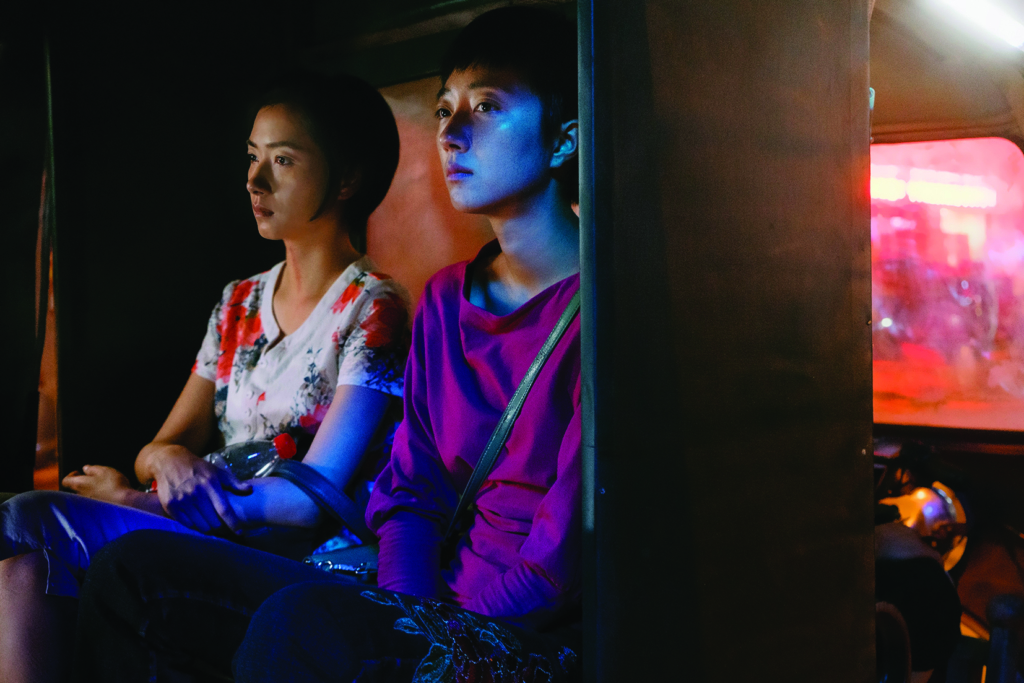
With these doubled sets of adversaries bearing down on them, neither Zenong nor Aiai is spared moments of cruelty. Mercifully, like the recent Uncut Gems (The Safdie brothers, 2019), The Wild Goose Lake does offer the possibility of a better tomorrow for its female characters beyond the narrow confines of its male protagonist’s death-march narrative. For everyone else, redemption is an impossibility in this cursed world of all-against-all. As a headlong tour of China’s seedy underbelly, The Wild Goose Lake delivers the formulaic satisfactions of a tightly wound narrative of ever-ratcheting tension, exploding outwards at moments of rupture that remain firmly controlled and impeccably framed.
Endnotes
| 1 | Diao Yinan, quoted in Film Movement, ‘Diao Yinan – Q&A’, The Wild Goose Lake press kit, 2019, p. 4. |
|---|---|
| 2 | Peter Bradshaw, ‘The Wild Goose Lake Review – Diao Yinan’s Shady Lady Noir Is No Quacker’, The Guardian, 19 May 2019, <https://www.theguardian.com/film/2019/may/18/the-wild-goose-lake-review-diao-yinans-shady-lady-noir-is–no-quacker>, accessed 18 February 2020. |
| 3 | Jake Wilson, ‘The Wild Goose Lake: Seductive, but No Smooth Ride’, The Sydney Morning Herald, 4 December 2019, <https://www.smh.com.au/culture/movies/the-wild-goose-lake-seductive-but-no-smooth-ride-20191203-p53geb.html>, accessed 18 February 2020. |
| 4 | Diao, op. cit., p. 6. |
| 5 | See Bob Mondello, ‘Remembering Hollywood’s Hays Code, 40 Years On’, NPR, 8 August 2008, <https://www.npr.org/templates/story/story.php?storyId=93301189>, accessed 18 February 2020. |
| 6 | See Nancy Tartaglione, ‘China Film Industry to Be Regulated by Communist Party Propaganda Department’, Deadline, 21 March 2018, <https://deadline.com/2018/03/china-film-industry-regulation-communist-party-propaganda-department-1202350328/>, accessed 18 February 2020. |
| 7 | See Matthew Carney, ‘Chinese Filmmakers Compromising on Sensitive Topics to Pass Censors’, ABC News, 1 February 2018, <https://www.abc.net.au/news/2018-02-01/the-art-of-compromise-to-pass-chinese-film-censors/9382212>, accessed 18 February 2020. |
| 8 | Diao, op. cit., p. 3. |
| 9 | Lionel M Jensen, ‘Sexuality and Behaviour’, in Edward L Davis (ed.), Encyclopedia of Contemporary Chinese Culture, Routledge, London & New York, 2005, p. 533 |
| 10 | Diao, op. cit., p. 3. |
